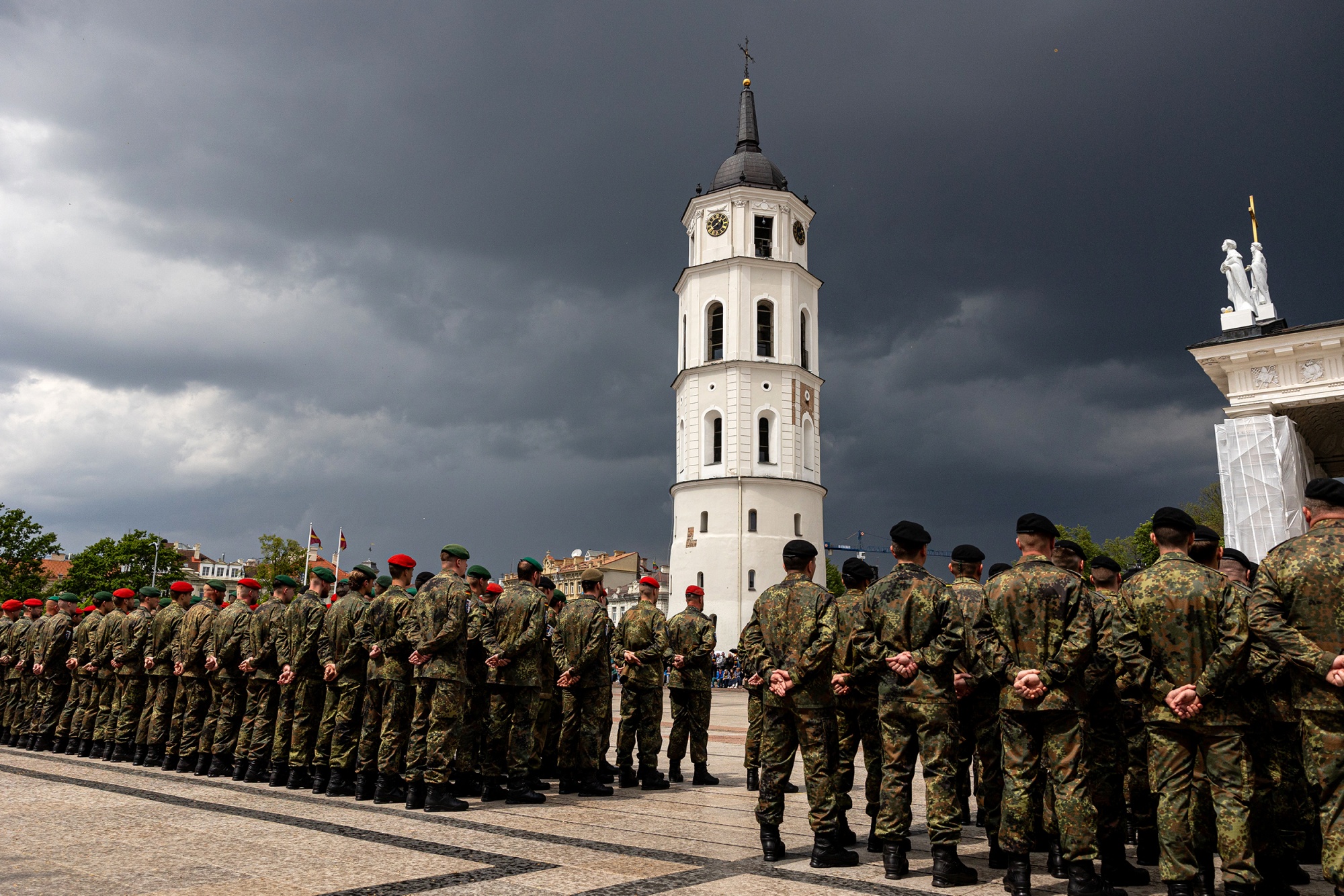As European officials observe the intensification of Vladimir Putin’s military capabilities, concerns are mounting over the prospect of a war with Russia, a scenario that seemed almost far-fetched just a few years ago. The Russian military is producing artillery shells, drones, and missiles rapidly, leading to oversupply that surpasses the demands of its ongoing operations in Ukraine. Meanwhile, recent actions by the U.S. and Israel against Iran, a Russian ally, have further destabilized the global landscape, even as former President Trump has called for a tentative ceasefire.
During a summit in The Hague, Trump is expected to reiterate the U.S. commitment to NATO’s mutual defense clause, as reflected in a draft statement from allied leaders. However, his comments aboard Air Force One displayed uncertainty when he remarked that his commitment “depends on your definition” of Article 5. “I’ve become friends with many of those leaders, and I’m committed to helping them,” he stated, adding that he would provide a clear definition upon arrival.
Despite Trump’s reassurances, European leaders harbor doubts about his commitments, especially following remarks made during the recent G-7 summit in Canada, where he questioned Russia’s absence from the discussions.
Currently, a war in NATO territory seems unlikely, primarily because Russia lacks the capacity and prefers to avoid a two-front conflict. Nevertheless, some Russian generals have publicly asserted that their ambitions extend beyond Ukraine, with Putin claiming all of Ukraine during a recent speech. “I consider Russians and Ukrainians as one people, and in this sense all of Ukraine is ours,” he said at the St. Petersburg International Economic Forum.
NATO Secretary General Mark Rutte has warned that Russia might consider an attack on NATO within the next five years, a view echoed by multiple European intelligence agencies. Heightened tensions have prompted NATO to encourage member nations to elevate defense spending to levels not seen in decades.
Denmark has even warned that Russia could engage in localized warfare with neighboring countries within six months and could pose a tangible threat to one or more NATO nations within two years. Estonia, Latvia, and Lithuania are seen as potential flashpoints due to their historic connections to Russia and their proximity to Russian territory.
If conflict arises, scenarios suggest a flood of casualties and refugees, alongside significant economic repercussions globally. Bloomberg Economics estimates that direct war-related destruction, combined with soaring energy prices from reduced Russian exports and turmoil in financial markets, could reduce global output by 1.3%, equating to a staggering $1.5 trillion in the first year—nearly matching the economic fallout from the full-scale invasion of Ukraine.
In the face of this insecurity, the Baltic states are now in the process of withdrawing from an international landmine treaty to strengthen their defenses, while NATO is enhancing air defenses along its eastern border. While European governments strive to secure public support for increased defense budgets, Russia’s military activities continue to escalate, with new nuclear bases and military infrastructure being established on its borders with NATO.
Speculation about how a conflict might unfold includes fears of staged incidents or hybrid attacks across borders. Lithuania’s former foreign minister indicated that Russia could fabricate a reason to halt a military train in Lithuania, potentially using it as a pretext for an invasion.
The potential impact of warfare could see the Baltic states suffer a staggering 43% drop in their economies, with other European nations facing significant repercussions as well. While European defense spending is expected to mitigate some fallout, overall GDP for the European Union would still decline by 1.2%. By contrast, Russia would face only a 1% loss, bolstered by existing sanctions that have insulated its economy to some degree.
As NATO evaluates its readiness, U.S. response timelines and strategies remain a vital concern, especially with Trump’s unpredictable stances. The ramifications of nuclear threats from the Kremlin could further complicate Europe’s response.
To avoid a potentially catastrophic conflict, there remains some hope for a peace settlement, conditional on cooperation among the U.S., Europe, and even China. However, returning to norms in business with Russia may prove challenging after nearly complete economic disentanglement.
With ongoing tensions, European nations are focusing on bolstering Ukraine’s military capabilities to prepare for a possible extended conflict while continuing to enforce sanctions on Russia. The evolving dynamics suggest that Europe is creeping closer toward a prolonged standoff that could redefine geopolitical relations for the foreseeable future.
“All this creates an uncomfortable environment,” Landsbergis remarked. “These situations can quickly escalate into a serious conflict that we may have overlooked or have been simply unprepared for.”

